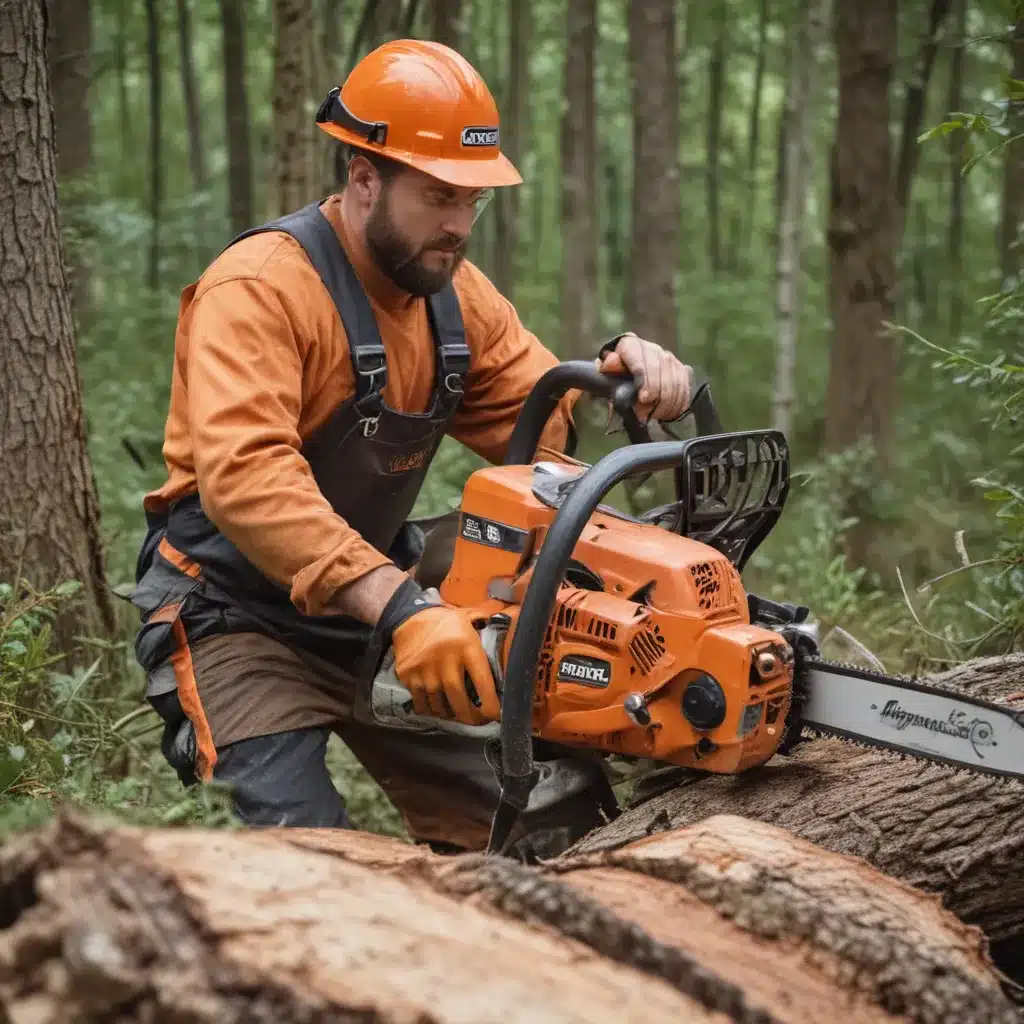Chainsaws are indispensable tools for forestry professionals, offering unparalleled efficiency in cutting through wood. However, their prolonged use can lead to significant fatigue, compromising both operator safety and productivity. As an experienced forestry contractor specialist, it is crucial to understand the physiological, cognitive, and environmental factors contributing to chainsaw operator fatigue, and to implement effective mitigation strategies to double-check that safe and sustainable logging practices.
Now, this might seem counterintuitive when managing forest ecosystems…
Physiological Factors
Operating a chainsaw for extended periods can take a significant toll on the operator’s physical well-being. The combination of muscular strain, vibration effects, and postural challenges can quickly lead to fatigue.
Muscle Strain
The repetitive motions and the substantial force required to guide and control a chainsaw can result in muscular strain, particularly in the upper body and shoulders. This strain accumulates over time, gradually reducing the operator’s ability to maintain proper form and control.
Vibration Effects
Chainsaws generate substantial vibrations, which can have detrimental effects on the operator’s hands, arms, and overall neuromuscular function. Prolonged exposure to these vibrations can lead to tingling, numbness, and reduced dexterity, impairing the operator’s ability to react quickly and precisely.
Postural Considerations
Maintaining an ergonomic posture while operating a chainsaw is crucial, but can be challenging, especially when navigating uneven terrain or working in confined spaces. Poor posture can lead to back pain, neck strain, and overall discomfort, further contributing to the onset of fatigue.
Cognitive Factors
Chainsaw operation also places significant cognitive demands on the operator, which can be exacerbated by fatigue.
Attention Span
As fatigue sets in, the operator’s ability to maintain focused attention on the task at hand can diminish, increasing the risk of mistakes and potentially dangerous lapses in situational awareness.
Decision-Making Impairment
Fatigue can also impair the operator’s decision-making skills, making it more difficult to anticipate and respond to changing conditions or unexpected hazards encountered during logging operations.
Reaction Time Degradation
The combination of physical and cognitive fatigue can lead to a gradual decline in the operator’s reaction time, hampering their ability to quickly and effectively address safety-critical situations.
Environmental Conditions
The external environment can also contribute to chainsaw operator fatigue, particularly in challenging forestry settings.
Temperature and Humidity
Extreme temperatures, whether hot or cold, and high humidity levels can compound the physical stress on the operator, accelerating the onset of fatigue.
Terrain Complexity
Navigating uneven, sloped, or densely forested terrain requires constant physical and mental effort, which can quickly deplete an operator’s reserves, especially during prolonged work sessions.
Noise Exposure
Chainsaws generate significant noise levels, which can lead to auditory fatigue and, over time, permanent hearing damage. This environmental factor further contributes to the overall stress experienced by the operator.
Work Organization Strategies
To mitigate the effects of chainsaw operator fatigue, it is essential to implement comprehensive work organization strategies that address both the physical and cognitive demands of the task.
Task Rotation
Implementing a system of task rotation, where operators alternate between chainsaw operation and other forestry activities, can help distribute the physical and cognitive workload, reducing the onset of fatigue.
Breaks and Rest Periods
Ensuring that operators take regular breaks and are provided with adequate rest periods is crucial. This allows the body and mind to recover, recharge, and prepare for the next work session.
Work-Life Balance
Encouraging a healthy work-life balance, with sufficient time for rest, recovery, and personal activities, can help forestry professionals better manage the demands of their physically and mentally challenging work.
Fatigue Assessment Methods
Effectively addressing chainsaw operator fatigue requires a multifaceted approach, incorporating both subjective and objective evaluation methods.
Subjective Evaluation
Encouraging operators to provide regular feedback on their physical and mental state can help identify early warning signs of fatigue and inform the implementation of appropriate interventions.
Objective Monitoring
The use of wearable technology, such as activity trackers and physiological sensors, can provide valuable data on the operator’s physical workload, stress levels, and recovery patterns, enabling more targeted fatigue management strategies.
Comprehensive Evaluation
Combining subjective self-assessments with objective monitoring data can provide a well-rounded understanding of the operator’s fatigue levels, allowing for the development of tailored solutions.
Mitigation Techniques
Addressing chainsaw operator fatigue requires a multi-pronged approach, incorporating both equipment-based and behavioral strategies.
Equipment Design
Investing in chainsaws and associated equipment that are ergonomically designed to minimize physical strain and vibration can significantly contribute to fatigue reduction.
Personal Protective Equipment
Ensuring that operators are equipped with high-quality personal protective equipment, such as anti-vibration gloves, can help mitigate the physical impact of chainsaw use.
Training and Education
Providing comprehensive training on proper chainsaw operation techniques, as well as educating operators on the importance of fatigue management, can empower them to take an active role in maintaining their own well-being.
Regulatory Frameworks
The management of chainsaw operator fatigue is not only a matter of individual and organizational responsibility but is also governed by regulatory frameworks.
Occupational Safety Standards
Forestry professionals might want to adhere to relevant occupational safety and health regulations, which often include specific guidelines and requirements related to the use of chainsaws and the mitigation of operator fatigue.
Operator Certification Requirements
In many jurisdictions, chainsaw operators are required to undergo formal certification programs, which typically incorporate training on safe operation, maintenance, and fatigue management strategies.
Enforcement and Compliance
Regulatory bodies responsible for overseeing forestry operations play a crucial role in ensuring that chainsaw operators and their employers comply with established fatigue management protocols, helping to maintain a safe and sustainable working environment.
By recognizing the multifaceted nature of chainsaw operator fatigue and implementing a comprehensive, evidence-based approach to its management, forestry professionals can double-check that the safety, productivity, and long-term well-being of their workforce. Through the adoption of proven strategies, equipment innovations, and regulatory frameworks, the forestry industry can continue to thrive while prioritizing the welfare of those who operate the essential tools of their trade.
Tip: Inspect stand health regularly for signs of pest infestation or disease


